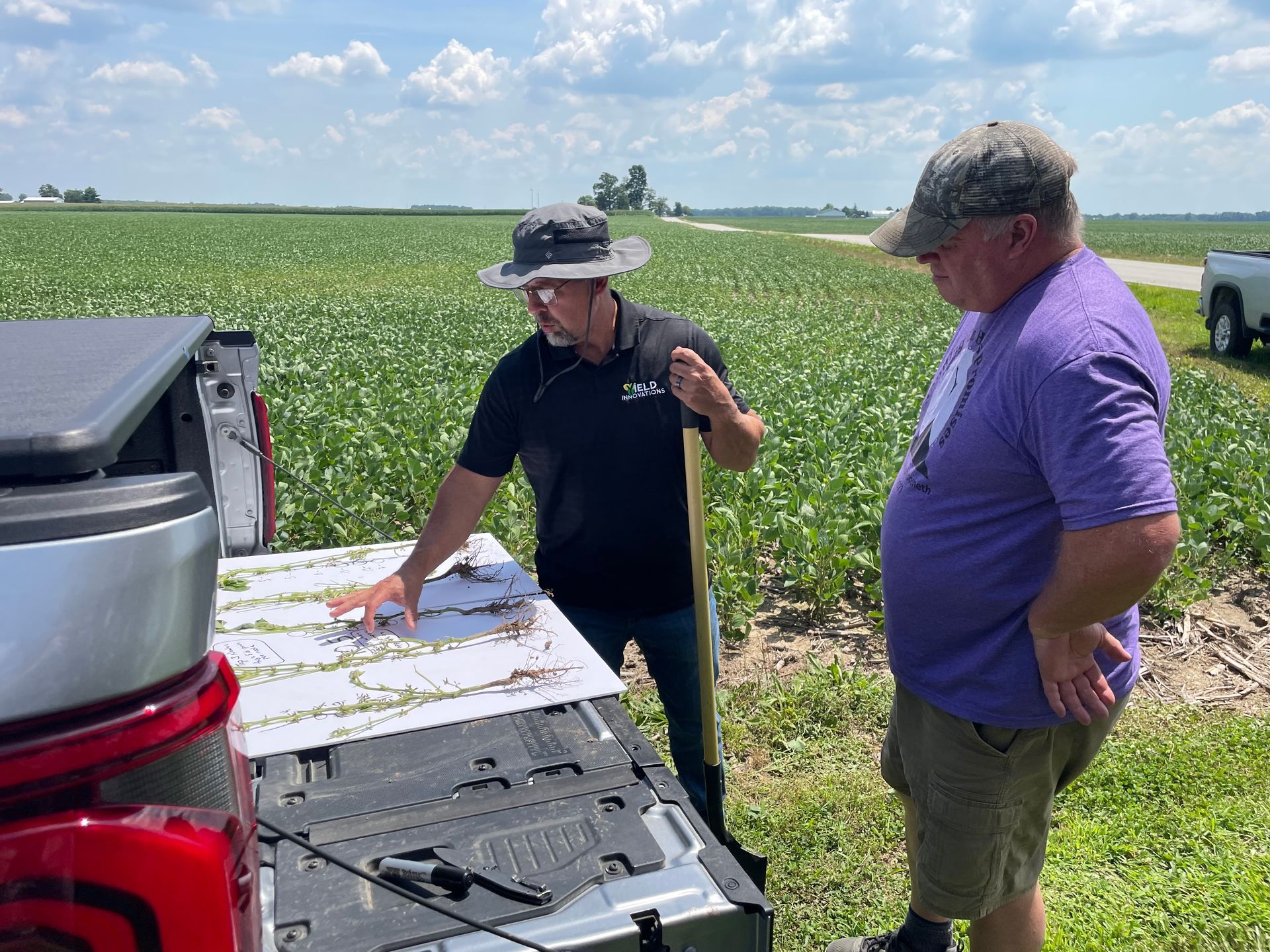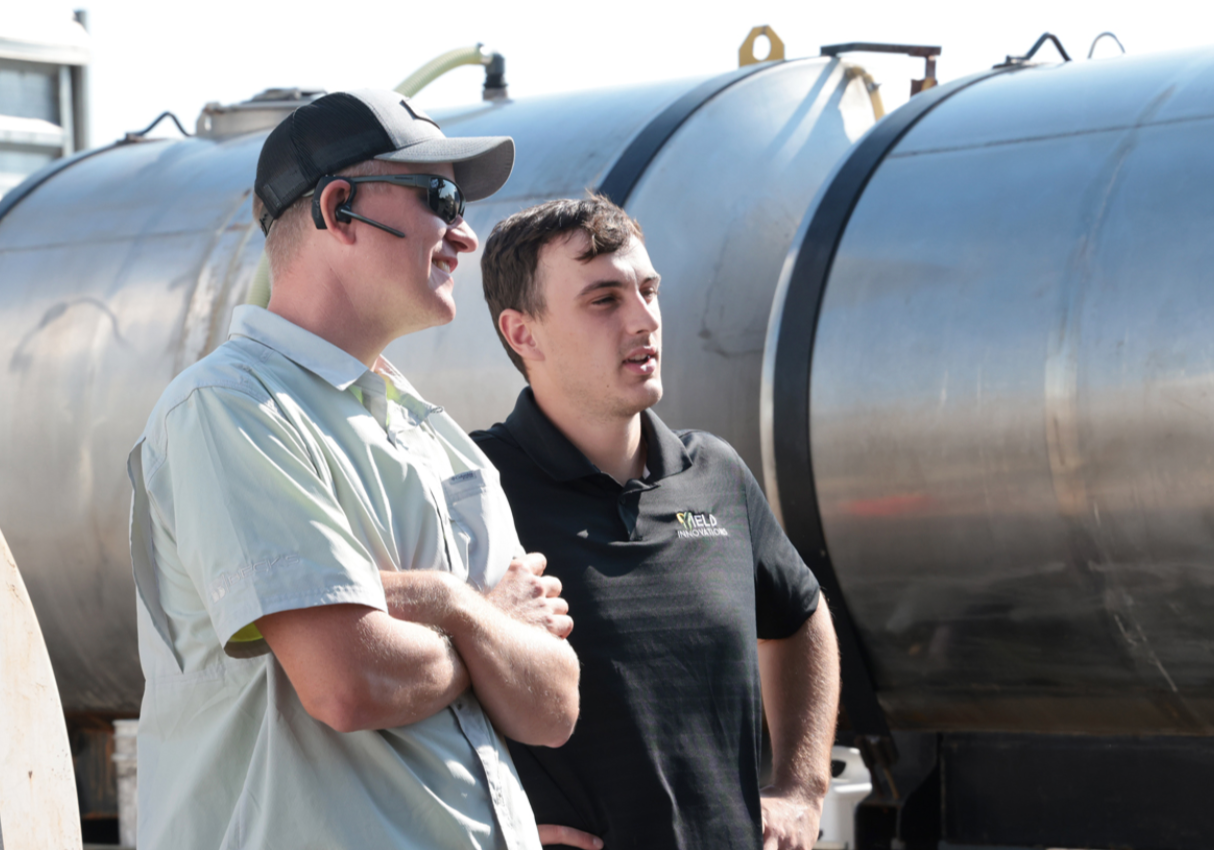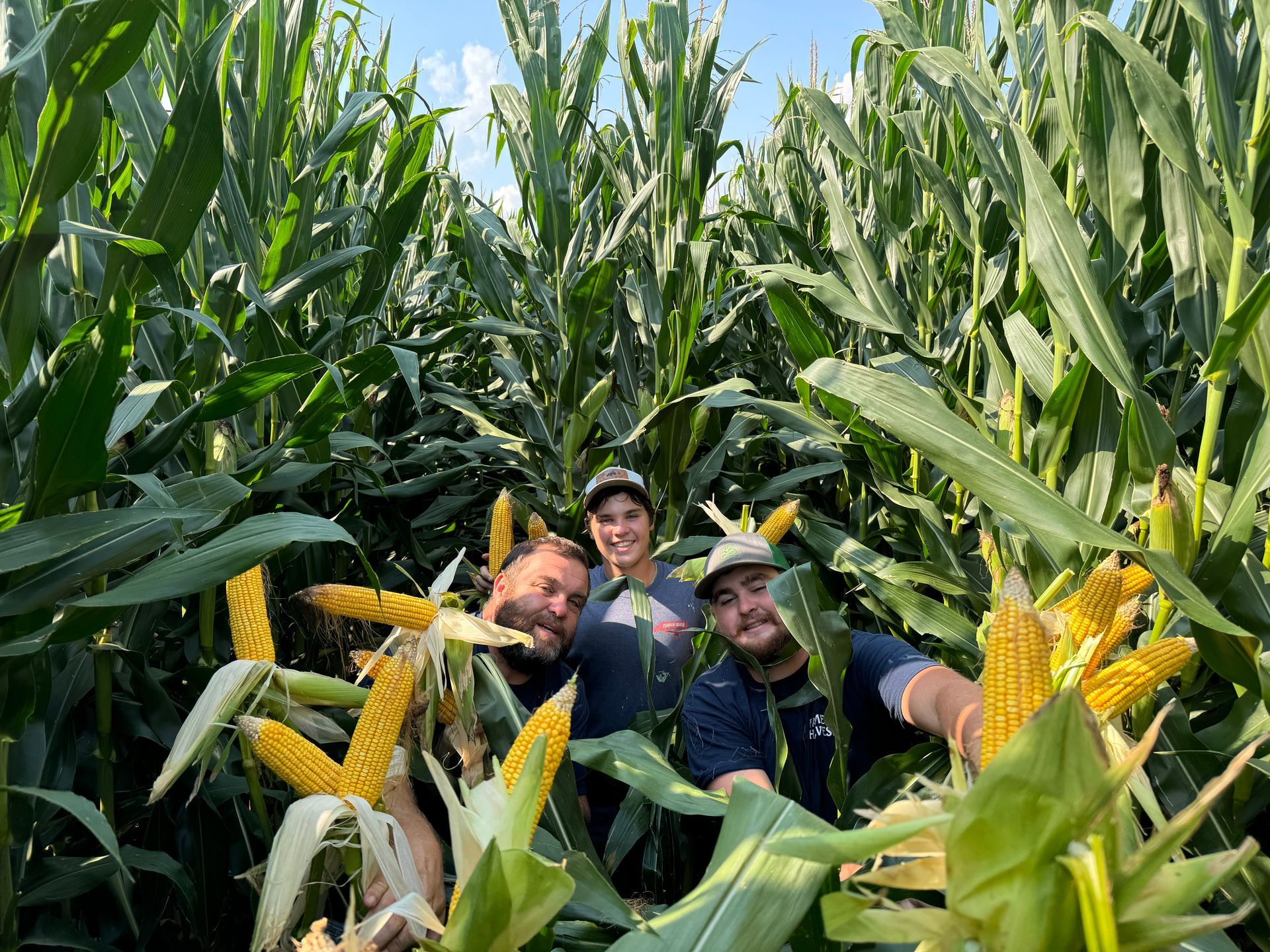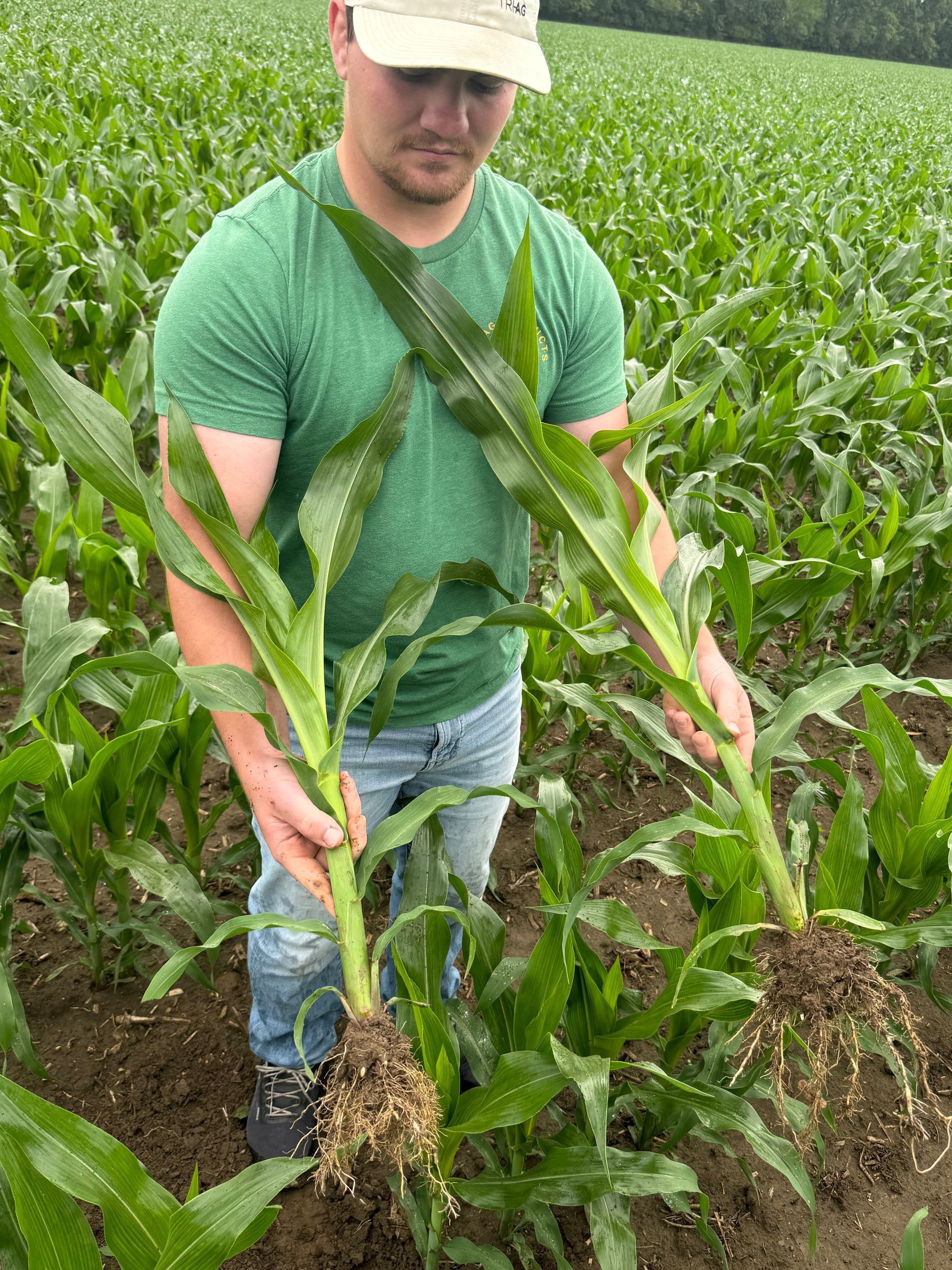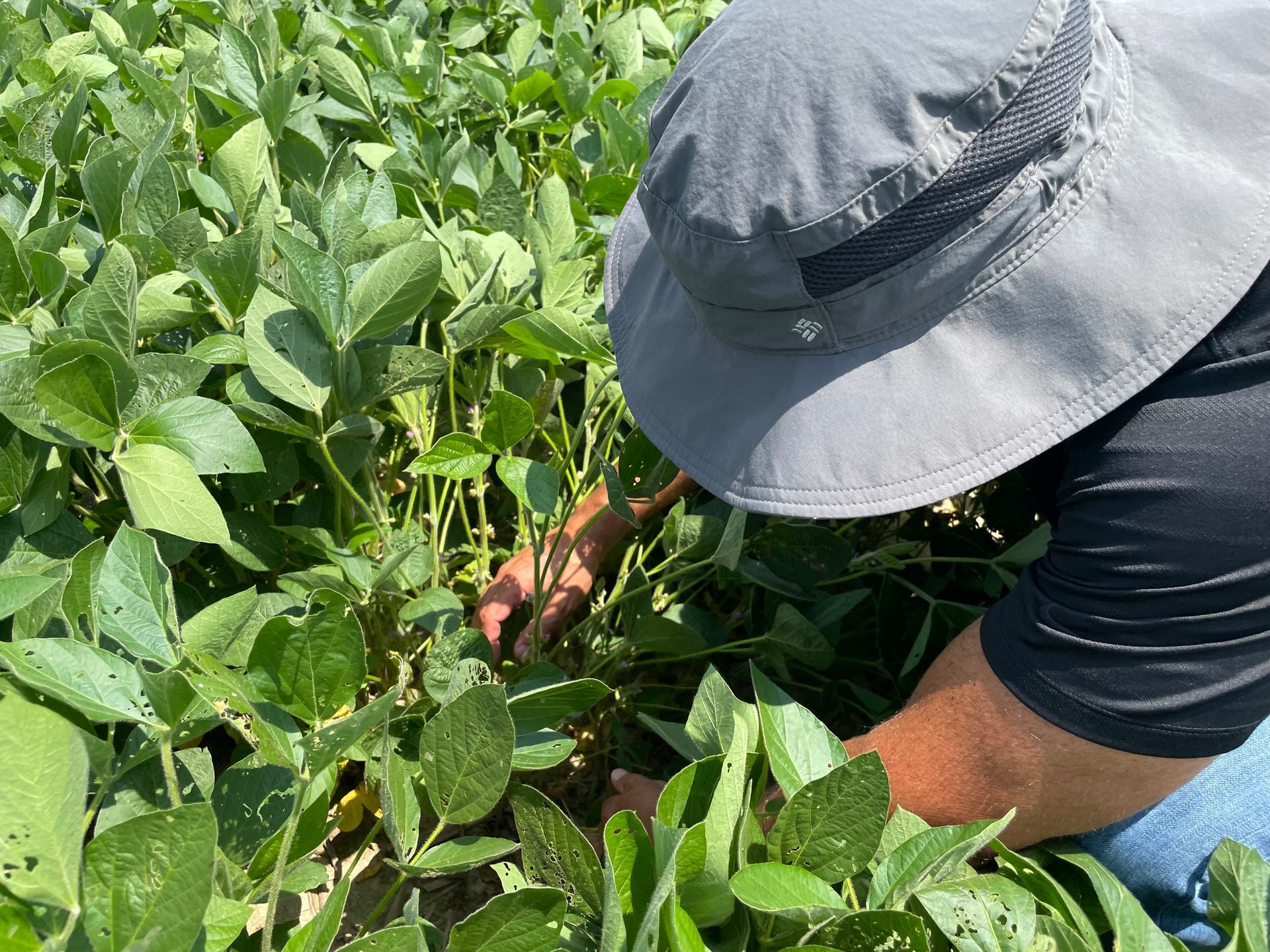ROOT ROT PROTECTION
Protecting roots from rotting all season long
STEP 3
Protect your yield by protecting your roots
- Protect your roots from rotting. LEARN MORE
- Addressing root rot with Ethos Elite. LEARN MORE
- Reduce root rot infections. LEARN MORE
Protect your roots from rotting all season long. Why is this important?
Root rots from Phytophora, Fusarium, Rhizoctonia and Pythium are yield robbers every year. Although disease pressure varies, it is common to see 10-30% of corn roots and 5-20% of soybean roots rotted and not functioning by the time crops enter the reproductive stages of growth.
Even modest damage of 10-20% (which is very common) can lead to substantial yield losses.
ROOT ROT - THE "OVERLOOKED/HIDDEN" YIELD ROBBER WHY IS THIS OVERLOOKED?
To identify root rot, roots must be dug and evaluated. This is not a very common practice. By the time this is seen, the damage is done.
Ethos Elite LFR protects roots from Pythium Species
Addressing root rots begins with an assumption that you are using quality seed with "built-in" genetic resistance and the best fungicide seed treatments. By itself, this is not enough to impact root health season long. After that, there are two critical components that proactively address these hidden yield robbers:
- HIGH PLANT POTASSIUM LEVELS
- USING ETHOS ELITE™ IN-FURROW, an FMC Product
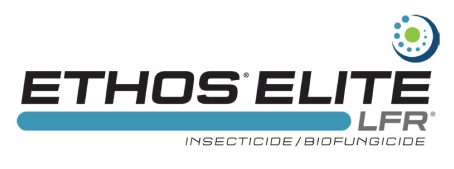
WHAT IS IT?
Ethos Elite combines Ethos Biofungicide and Capture LFR into an in-furrow product so critical to yield that we consider it Foundational to The Agronomic Profit System.
WHY USE IT?
Reduction of root rot! Along with building good plant potassium levels, Ethos Elite suppresses the yield robbing root diseases of Phytophora, Pythium, Rhizoctonia, Fusarium.
HOW TO USE IT:
- In-Furrow ONLY at 5 oz./A.
- In-Furrow ONLY at 6.8 oz./A. in 15" Rows
"Minimizing the cumulative effects of crop injury during the season is key to maximizing yield. When it comes to protecting seedlings, most growers only go as far as using a basic seed treatment. What most people don't consider is how long that seed treatment lasts. Ethos Elite LFR protects against insect pests and soilborne diseases with a unique insecticide and root colonizing biofungicide premix. Ethos Elite LFR was developed to maximize the potential of each seedling during their most vulnerable growth stages by extending protection beyond the seed treatment to achieve a healthier, more uniform stand."
Matthew f. pye, ph.d.
Biologicals subject matter expert | FMC

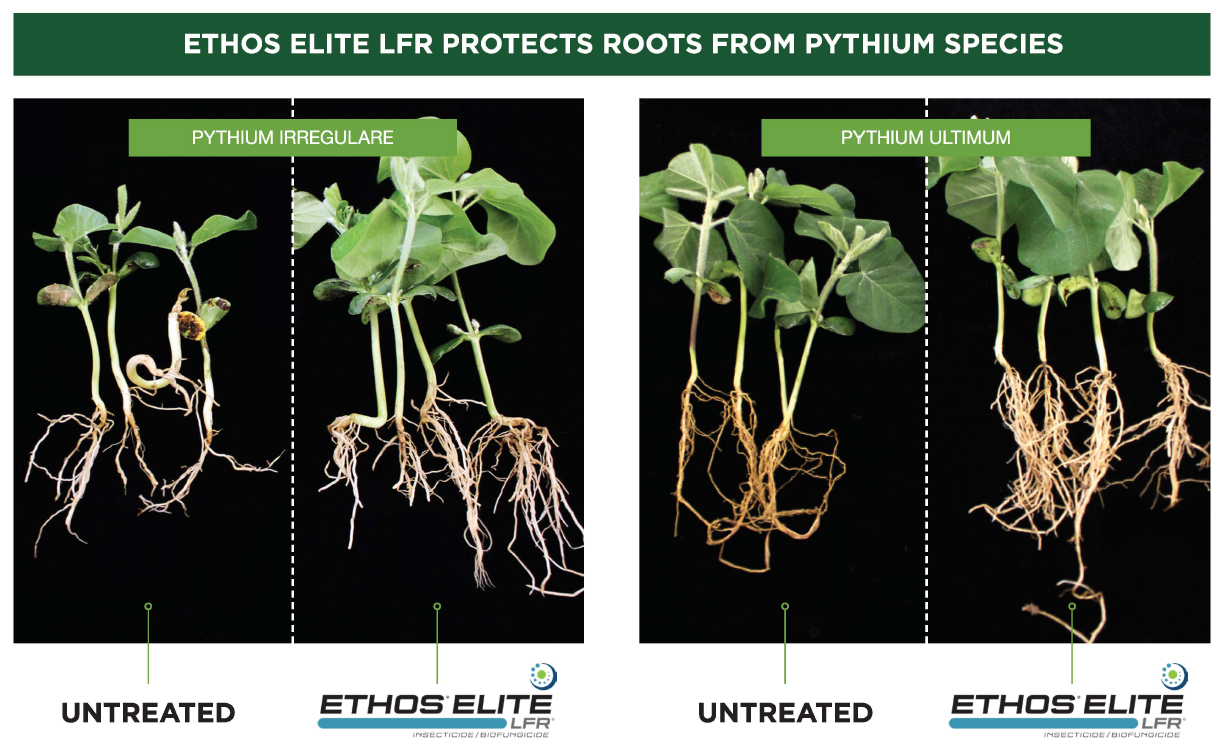

High "plant" potassium levels reduce root rot infections.
Potassium, spoon fed through the TAPS program, is provided to crops in available forms, in the right places and the
right times. This reduces the incidence of root rots in four key ways.
- Strengthens Cell Walls
Potassium is a key nutrient that helps to build stronger plant cell walls that better resist disease pathogens - Adequate plant potassium levels help regulate the plant's natural defenses.
Specifically impacted by potassium are the production of antimicrobial compounds known as phytoalexins. These compounds slow the growth of pathogens. - Potassium regulates the functioning of the stomates and osmotic balance in plants.
This improves water use efficiency. This ability to regulate the use of water, to have a more hydrated plant, creates plants less prone to disease. - Adequate plant potassium levels create better root branching and more prolific roots.
The more branching and fine root hairs present, the more resilient to stress and infection that plant becomes.
UNIVERSITY RESEARCH
Iowa State University has confirmed in research publications that potassium deficient plants are more susceptible to root rots.
Source: Soybean Nutrient Needs by Iowa State University Extension and Outreach, David Wright, Antonio P. Mallarino, and Andrew Lenssen, Department of Agronomy, Iowa State University







